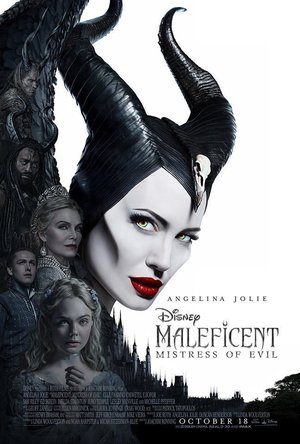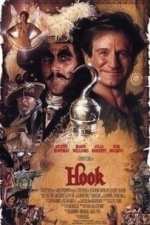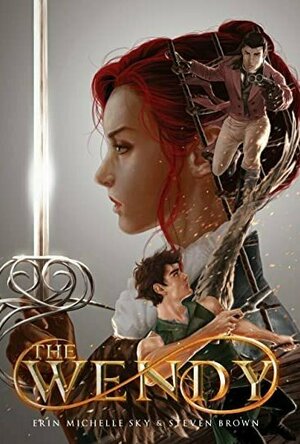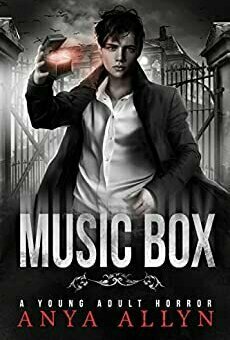
Radio España FM Pro
Music and Entertainment
App
Radio España es la aplicación que necesitas, ligera y rápida. Funcionalidades : - Temporizador...

The Weather Station by The Weather Station
Album Watch
On her fourth (and tellingly self-titled) album as The Weather Station, Tamara Lindeman reinvents,...
alternative folk rock
Charlie Cobra Reviews (1840 KP) rated Maleficent: Mistress of Evil (2019) in Movies
Jul 7, 2020
The beginning started off strong for this movie and it immediately reminded me of what i liked about the first one. Angelina Jolie is just magnificent as Maleficent and you can tell she really enjoys acting the part. I didn't really understand why the people feared her is she wasn't a bad guy (which was the point of the first one I thought, showing the story from her side), but apparently the Queen was spreading rumors or stories to make people frightened. At the dinner scene it was quite believable from Maleficent's outburst that she might have done something to the King but to me it was too out of character that Aurora would believe her to do something like that. Also it was too Deus Ex Machina for another Fey, Connall to have been around close enough for him to save Maleficent when she is shot by an iron bullet. I really liked the scene where they fly around the underground caverns where the other Fey live and show the different biomes and talk about her unkown heritage. It bothered me that the Queen had that little fairy guy that was doing the experiments for her on his own people and how that stuff could kill him too, but what bothered me more was that it never showed his motivations when he released the little creatures in the dungeon. It just showed him do it and never said why or what changed his mind, I feel like there might have been a scene cut there or something. And then there was a couple of ridiculous scenes for me that almost killed this movie for me. One was that all the fairy creatures were invited to the wedding, which was obviously a trap with the red powder already being hinted at, but the fact that the people didn't make as much a deal about it like they did when Maleficent came to dinner surprised me. I mean they had guards holding back the citizens but when Maleficent appeared they ran away, wouldn't they have acted similarly if there were monsters coming to their kingdom. The attack by the Dark Fey on the castle was also one of those parts that made me wonder what the hell was going on. They are massacred on a big scale by the red powder which earlier in the film, it said that it was hard to make or took a long time, but they had butt loads of it in this battle. They had so much that when the Dark Fey retreat and change where they attack the humans even had traps setup in those areas as well. I mean it made for an interesting intense battle scene but Maleficent was the only one of her kind the humans had ever seen and only the Queen's servant said she saw one similar to her save her from the water. How did they know an army was coming and attacking by air. Good planning, smart Queen I guess. I was greatly disappointed that Maleficent didn't turn into a dragon like the cartoon. I love seeing a good dragon on screen but I guess the Phoenix was a good change and fit more with the story especially with her sacrifice. Phoenix's are reborn from their ashes as it says. The last part I found to be laughable was that when the battle is over Aurora is like, "Weddings back on". Her and the Prince are like, we will live in peace from now on with the Moors. Ok, you were just killing each other a couple of minutes ago, and so many Dark Fey died it wasn't even funny. Oh yeah, this movie also did quite a great job of hiding any blood whatsoever in a lot of scenes where there probably should have been some maybe a little. I mean Maleficent gets shot, Connall gets shot up like swiss-cheese, and the soldiers are shooting in the final battle and everyone has weapons like axes, swords, etc.. I really wanted to give this movie a 7 but I have to give it a 6/10.
Hazel (1853 KP) rated As I Descended in Books
Dec 17, 2018
With this retelling of the famous bard’s tragedy <i>Macbeth</i>, Robin Talley takes steps to add another genre under her belt. Talley is fairly new to the young adult literature scene with <i>As I Descended</i> being her third publication. Many avid readers may already be aware that the author likes to tackle homosexuality and the surrounding stigma, whilst also encompassing other issues, i.e. black civil rights and long distance relationships. This novel is no different, however the other “issue” is on a paranormal level and follows the key themes in the Scottish play.
The story is set in a Virginian private school full of rich adolescents full of high expectations and the desire to be the best. Maria is always coming second best despite all her hard work, and Lily, her girlfriend, thinks this is entirely unfair. The student in first position, and set to win the Kingsley Prize, is Delilah, a popular girl who bullies and manipulates people to get what she wants. Determined to get Maria to see she should be the winner, Lily arranges a séance where she plans to pretend a spirit has contacted her telling Maria to beat Delilah. However the plan falls through when a real spirit begins communicating with them.
Lily is almost as manipulative as Delilah and convinces Maria to cheat her way to the top. Keeping in mind this is a retelling of <i>Macbeth</i>, a play that contains several deaths; you can guess the direction events are going to take. With Delilah out of the picture, Maria’s best friend Brandon and his boyfriend Matteo begin to suspect Maria of foul play.
Due to their initials it is easy to work out which of the original cast each character is representing. Maria, Lily, Delilah, Brandon, Matteo… Macbeth, Lady Macbeth, Duncan, Banquo, McDuff… As a result, the fate of the characters has already been predetermined, causing readers to jump to conclusions about each individual. However the introduction of a supernatural theme gives the storyline an entirely new outlook.
Initially I felt sorry for Maria and Lily, two lovely girls hiding their romantic relationship from the rest of the world. Maria never put a foot wrong, and Lily gets sympathy on account of being disabled. I related a lot to Lily at the beginning as I have also experienced severe leg pain and suffering around on a pair of crutches. However once the actual retelling of <i>Macbeth</i> began I took an instant dislike to the pair. I have never liked people who sabotage other’s lives and successes in order to be the best. This put a damper on the entire novel, making it a lot less interesting as there were no longer any characters I fully respected.
What I did enjoy was they way Talley managed to produce a modern retelling of the play. <i>Macbeth</i> is not the easiest story to bring into a contemporary setting, especially as it is about a King and set in a castle. Talley successfully created a narrative that no one else would have thought of – a particularly clever feat.
Those familiar with the play, especially those who had the opportunity to study it at school, will recognize a lot of the chapter headings as direct quotes from Shakespeare’s writing. It is exciting to find all the references to <i>Macbeth</i> and use your own knowledge to understand where the story is going.
Do not worry if you are unfamiliar with Shakespeare’s works, <i>As I Descended</i> is not reliant on prior knowledge in order to work. Ignoring <i>Macbeth</i>, the book is about greed and perfectionism as well as homosexual relationships and the worries about how others will perceive them, especially homophobic parents.
Overall, <i>As I Descended</i> was not as great as I hoped it would be due to the nature of the characters’ personalities. The risk Talley took in undertaking a retelling of <i>Macbeth</i> however has been an extremely successful accomplishment. It may even be beneficial for students struggling to understand <i>Macbeth</i>. If schools can get over their fear of homosexual content, it would be lovely to see this book being read as part of the curriculum.
Darren (1599 KP) rated Hook (1991) in Movies
Jul 7, 2019
Writer: James V Hart, Nick Castle, Malia Scotch Marmo (Screenplay) J.M. Barrie (Books)
Starring: Dustin Hoffman, Robin Williams, Julia Roberts, Bob Hoskins, Maggie Smith, Caroline Goodall, Charlie Korsmo, Amber Scott
Plot: When Captain Hook kidnaps his children, an adult Peter Pan must return to Neverland and reclaim his youthful spirit in order to challenge his old enemy.
Tagline – What if Peter Pan grew up?
Runtime: 2 Hours 22 Minutes
There may be spoilers in the rest of the review
Verdict: Fun-Filled Fantasy
Story: Hook starts as we meet businessman Peter Banning (Williams) who has started over working leading to his children become distant, his wife Moira (Goodall) forces him to visit his Granny Wendy (Smith) in London for Christmas, where she sees how much Peter has changed since his childhood of never wanting to grow up.
Captain Hook (Hoffman) takes Peter’s children, which sees Peter needing to be pushed into returning to Neverland, a place he has long forgotten about, with Tinkerbell (Roberts) taking him there only for Hook to be left disappointed by the man Peter has become, Tinkerbell has three days to restore Peter’s faith in Neverland to save his children.
Thoughts on Hook
Characters – Peter Banning is a lawyer that has been neglecting his family, his Grandmother sees him losing his young heart that made her take him in, in the first place, Peter must confront his past to save his children from his old nemesis Captain Hook in Neverland, a place he has long since forgotten about. Peter has become everything he once hated as a child and shows how at times parents can get buried in their work. Captain Hook has been waiting for the day Peter Pan returns, he is left disappointed when he does return a shell of the boy that left, giving him three days to prepare for a battle, while having his own plan to get revenge on Peter. Tinkerbell comes to Peter to bring him back to Neverland, she helps transform him back to his original self, while showing him what he is still fighting for.
Performances – Robin Williams was a great choice for this role, he gets to manages the serious adult side of everything as well as the playful side of Peter Pan with ease being able to swap between the two whenever he needs to. Dustin Hoffman as the villainous Hook has great enjoyment in this role where he does get to play along with his character. Julia Roberts does all she needs to do without being as involved as the lead too.
Story – The story follows an older Peter Pan that must return to Neverland to save his own children after his old nemesis Captain Hook takes them there. This spin on the Peter Pan story is a wonderful on because see Peter grown up becoming everything he promised he wouldn’t shows us just how difficult being an adult can be, you will turn your back on parts of your childhood become what you once feared. This was always the meaning behind Peter Pan in the first place, finding an escape from the busy lives, now an adult must use this to save his own relationship with his children and family, which is what is important in life.
Adventure/Comedy/Fantasy – The adventure side of the film takes Peter to Neverland to relive moments of his childhood in a fantasy battle against pirates with fairies on their side. We do get elements of comedy, but even Robin Williams is held back from going into his full routine like we saw in Aladdin.
Settings – The film uses the same settings that we know from Peter Pan, the London setting might well be a more modern one, but Neverland hasn’t aged a day since Peter has left.
Scene of the Movie – The battle.
That Moment That Annoyed Me – Pop culture references.
Final Thoughts – This is a magical version of Peter Pan’s adventures showing how life can change for adults who never thought they would be when they were children.
Overall: Magical adventure.
Rating
Lottie disney bookworm (1056 KP) rated The Wendy (Tales of The Wendy #1) in Books
Dec 29, 2020
Enter Erin Michelle Sky and Steven Brown with their Tales of Wendy series to prove me wrong! The Wendy is the first in this series but I am already desperate to finish the second book, The Navigator before their third is released at the end of this year.
The Wendy, as you may expect, centres around Wendy Darling. However, this is not the prissy, mother-idolising figure I love to roll my eyes at: oh no, this Wendy Darling is growing up in the late 1700s in a London orphanage. In a world where her sole career option seems to be to become a mother, this feisty ten-year-old would prefer to “marry Davy Jones than grow up and look after babies”. This Wendy Darling is the one I have been waiting for.
Wendy’s dream is to join the Navy and sail the world. Unlike the rest of 18th Century Britain, she doesn’t see why being a girl should prevent this.
Therefore, over the years she becomes adapt at mathematics, science, navigation, marksmanship and swordsmanship. Nevertheless, despite being just as good, if not better than her childhood friend Charlie, he earns the rank of Officer in the British Navy whilst Wendy is assigned to the Home Office as a Diviner, one who can detect the presence of magic: a post to be filled only by women and dogs.
It is here that the reader meets John and Michael: Wendy’s “brothers-in-arms but in no way related, despite what you may have heard”. They are all stationed in Dover Castle, along with the Brigade’s dog Nana (who else?!). Their mission: to protect Britain from a magical threat, the innisfay or “everlost”, whom are known to kidnap orphans. Sound familiar?
The Wendy is definitely the best retelling of Peter Pan I have read so far. Despite the presence of all our favourite names, the characters are a far cry from their animated counterparts. Michael and John are wonderfully dry and sarcastic; Hook is powerful and attractive; Tink is a shape shifter; Peter, despite possessing a pair of wings and armour, is essentially the same and Wendy is an ambitious, feisty, yet beautifully flawed protagonist.
There are many little nods to the film which are greatly appreciated. Wendy “moving out of the nursery” means leaving the orphanage and gaining an apprenticeship and “thinking happy thoughts” as a means of flight is a practical joke by Peter to make Wendy smile.
Sky and Brown’s conversationalist style of writing makes this a very easy read, despite Wendy galloping all over the South of England with a variety of characters. It also allows the reader to really bond with Wendy and empathise with her and her struggles to achieve the employment she has longed so for since childhood.
As you may have gathered, sexism plays a large part in Wendy’s uphill struggle: as the only main female character she is constantly undermined in her ambition to become a sailor. Even when she proves to be useful in her post within the Home Office she is removed to the country “for her own safety”. Those men whom do not undermine her moon after her romantically: it truly is infuriating.
In some situations, this ingrained attitude was slightly heart-breaking but equally a sign of the times in which this novel was set: Wendy’s thoughts often returned to the propriety of her actions and the danger she experiences just through wearing “men’s clothes” is powerful moment. However, Wendy never lets these attitudes halt her ambition, ending her first novel as a true inspiration to girls following in her footsteps: Navigator Darling.
I can’t wait to discover the next step in her journey which, conveniently, lays past the second star to the right and straight on till morning!
Heather Cranmer (2721 KP) rated Music Box (Dark Carousel #4) in Books
Nov 23, 2020
Cassie has given up hope of not being Balthazar's bride. She's about to just give in to it when she finds a way to the tower where the spooky figure she has seen lives. Scared as she is of the figure, she decides to investigate and is shocked to discover who the figure is. Cassie, with the help of her friends, must find some way to defeat the serpent shadows before they take over the Earth all while battling the humans and spirits of the castle. While she and her friends put their lives in great peril, they never give up hope of returning the Earth to its former glory.
The plot of Music Box did a fantastic job of holding my attention throughout. While there are some parts of this novel that are a bit too fast paced like in previous books in the series, for the most part, the pacing is easy to follow along with. There are a few plot twists that I wasn't able to predict. There was so much action going on in Music Box, and I loved it. It wasn't overwhelming, and it was underwhelming. Anya Allyn did a fantastic job with getting the ratio of action to narrative perfect! I did have a feeling that one of the characters in the Dollhouse would make an appearance, and I wasn't wrong. I liked the way all the loose ends from the previous books in the series were all tied up nicely. While I wasn't really a fan of how the book ended, I will say that it didn't have a rushed ending feel. I just wish things would have turned out a bit differently. However, I did love how the author explains more of the ending and what she believes happened to all the other characters in the afterword, so definitely don't skip out on reading the afterword!
As always, Anya Allyn was amazing at making her characters come alive. It was so easy to relate to all of them (bad guys and girls aside). Cassie was even more hardcore in this book! I loved how Cassie was willing to sacrifice everything to protect her friends and others. Ethan was the same as Cassie. He tried to protect innocents from the bad guys. While I liked Molly, I still don't think her character was needed, same with Frances. Don't get me wrong, they are great characters and written really well, but they seemed a bit pointless. I was happy about Aisha in this book. (I won't go into greater detail due to minor spoilers.) I absolutely loved Zack, and I was always secretly hoping that Cassie would end up with him. Zack turned out to be such a gentlemen from the second book. I loved how he was willing to cut ties from his family to help Cassie even though he knew it was an unrequited love. Henry was another character that I really loved. I felt that he wasn't all bad and that there was some good in him. The book he was seeking in the novel was what brought out the bad. He did have a bunch of redeeming qualities though. I was overjoyed that Jessamine was finally featured a bit more in this book! Jessamine has been my favorite character throughout this series. I was thrilled with how her story ended. I always knew she'd turn out to be awesome!
Trigger warnings for Music Box include violence, death, murder, suicide, attempted rape, minor swearing, the occult, and imprisonment.
While I'm devastated that the Dark Carousel series has come to an end, I am so grateful that Music Box was a great read. All of the characters were still so amazing, the story was thrilling, and everything was so nicely explained. I would definitely recommend Music Box (and all of the Dark Carousel series) by Anya Allyn. If you want a book with lots of action and a great cast of characters, this is your book. Do be prepared to suffer from a book hangover when you're done reading it though!
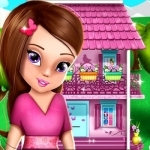
Baby Girl Doll House Games – Virtual Dream Home
Lifestyle and Games
App
*** Build the cutest dollhouse for sweet baby girls in awesome doll house games! *** * Welcome,...
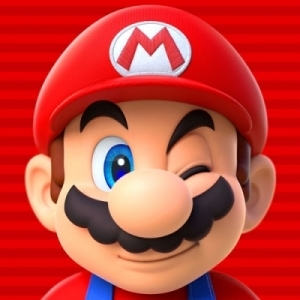
Super Mario Run
Games
App Watch
A new kind of Mario game that you can play with one hand. Super Mario Run has received some big...
